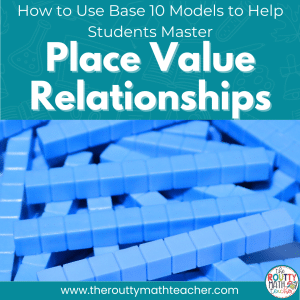
Problem Solving Resources Students will Love!

Looking for great problem solving resources? This post includes a list of engaging resources to help your students expand their critical thinking toolboxes.
Effective math teachers “engage students in solving and discussing tasks that promote mathematical reasoning and problem solving.” The National Council of Teachers of Mathematics, 2014
Problem solving can come in the form of games, logic problems, word problems that emphasize non-routine solution strategies, puzzles, tiling tasks, problem of the day, and riddles and stumpers.
“But, where do I find these fabulous tasks?” you ask.
Look no further . . .
In today’s post, I’m sharing ten of my favorite problem solving resources that my students have loved over the years. Be sure to check out the links and freebies that accompany each resource!
Problem Solving Resources
1. Coolmath.com
Some of my favorite problem solving challenges are web challenges. Coolmath.com has many critical thinking games and is my favorite site for using technology to increase rigor. The “Bridge Crossing” game and the “Water Jars” game are my personal favorites! Read more about them here.
2. Logic Puzzles
These puzzles really emphasize strategic thinking and encourage students to use problem solving strategies, such as guess and check, to determine the value of the symbols. Logic puzzles also emphasize algebraic reasoning! As the puzzles increase in difficulty, students must begin to stretch their minds and expand their problem-solving toolboxes in order to solve the problem.
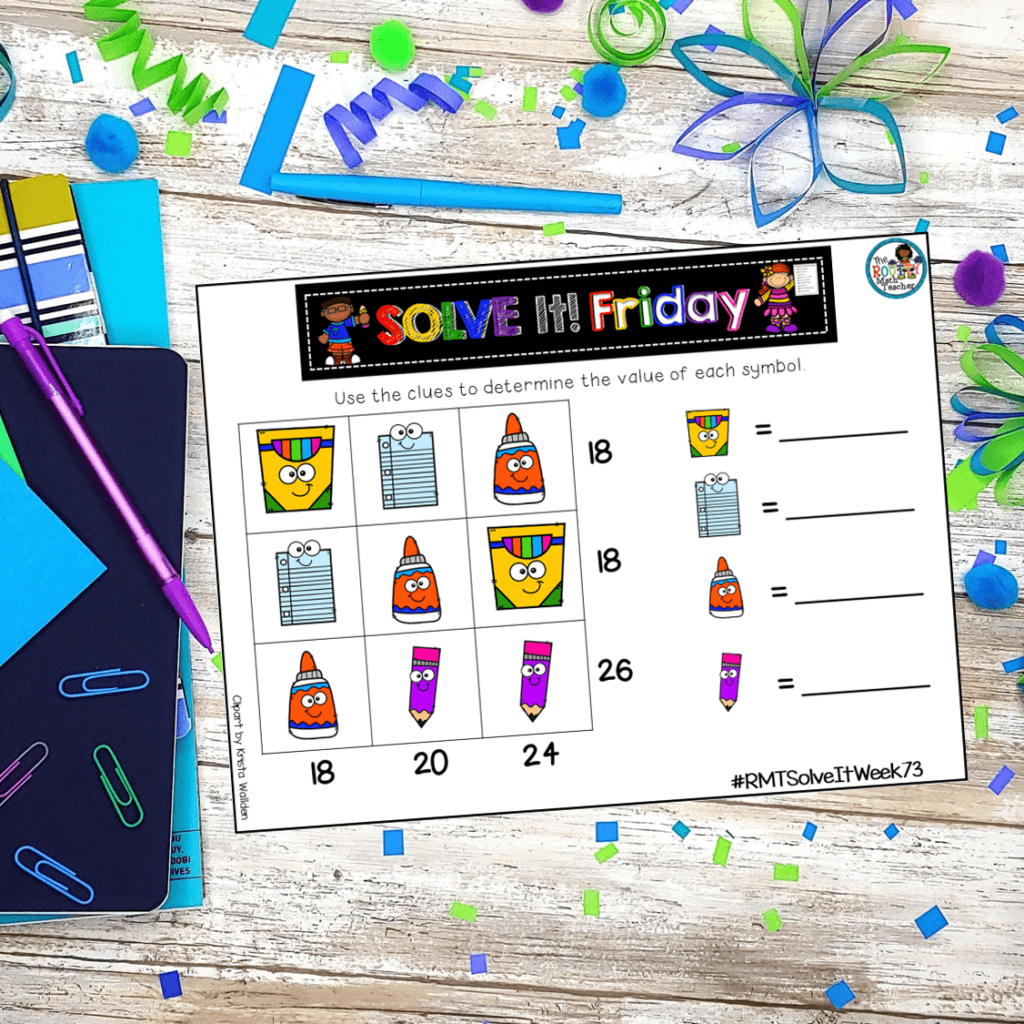
3. Number Clue Puzzles
These tasks are quick and are great starters. The puzzlers include a list of clues about a number (0 – 9). Students use the clues to eliminate certain numbers until they are left with just one number.
4. Problem Solving Scenarios
I’ve always loved a good problem solving challenge! These more traditional tasks require students to read a scenario, make sense of the problem, choose a strategy to solve it and determine the solution. I love to sprinkle these tasks throughout my lessons to expand my students’ problem solving strategy toolboxes.
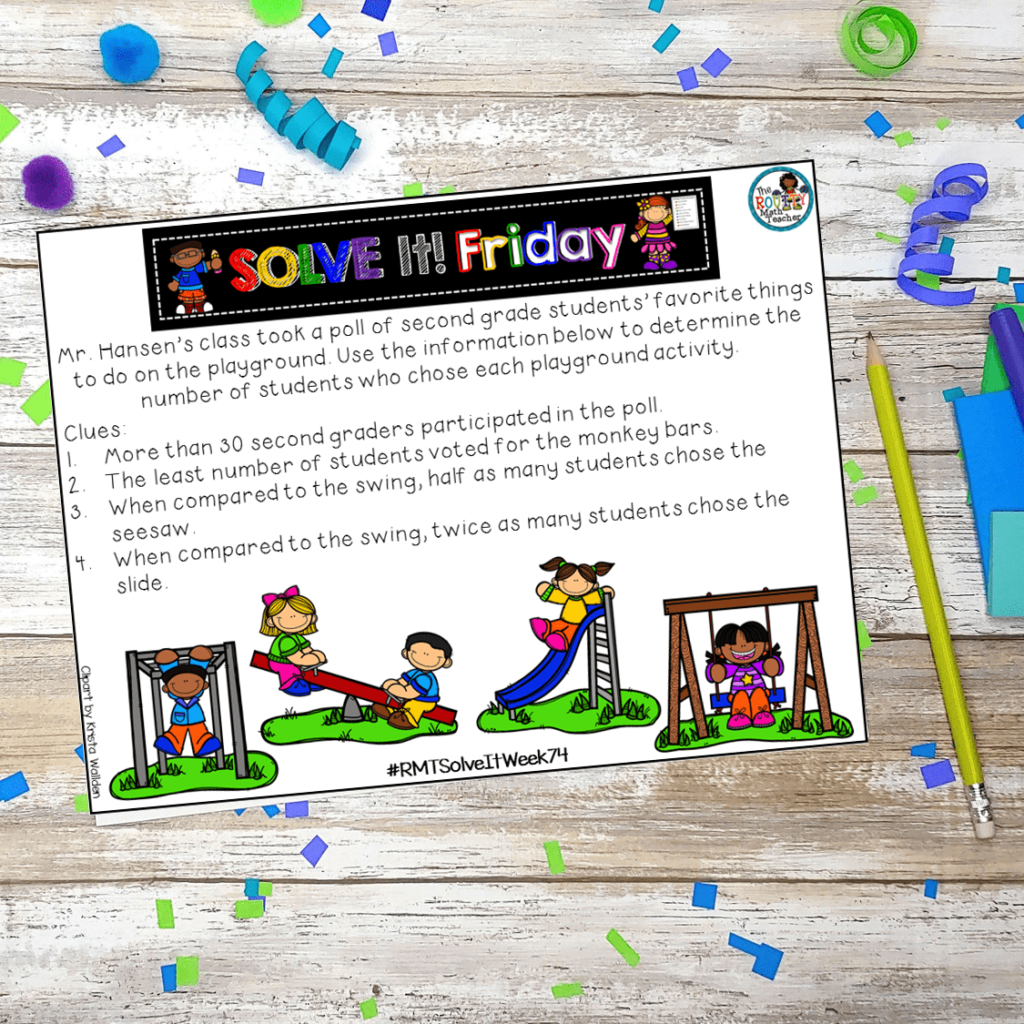
5. Tiling Tasks
I first began using Marcy Cook’s tiling tasks when I started teaching about 15 years ago. They were great critical thinking tasks for my students. They’re also versatile and cover a lot of skills, so I use them all the time. The basic idea is for students to place a set of numbered tiles 0-9 in the correct position. Generally, each tile has one, and only one, position. Therefore, students must use the clues to determine where each tile belongs.
6. Weight Logic
These quick tasks are seeming very simple but sometimes require complex reasoning and algebraic thinking skills to solve them. Students use the weight and the combination of items on the scales to determine the value of each symbol.
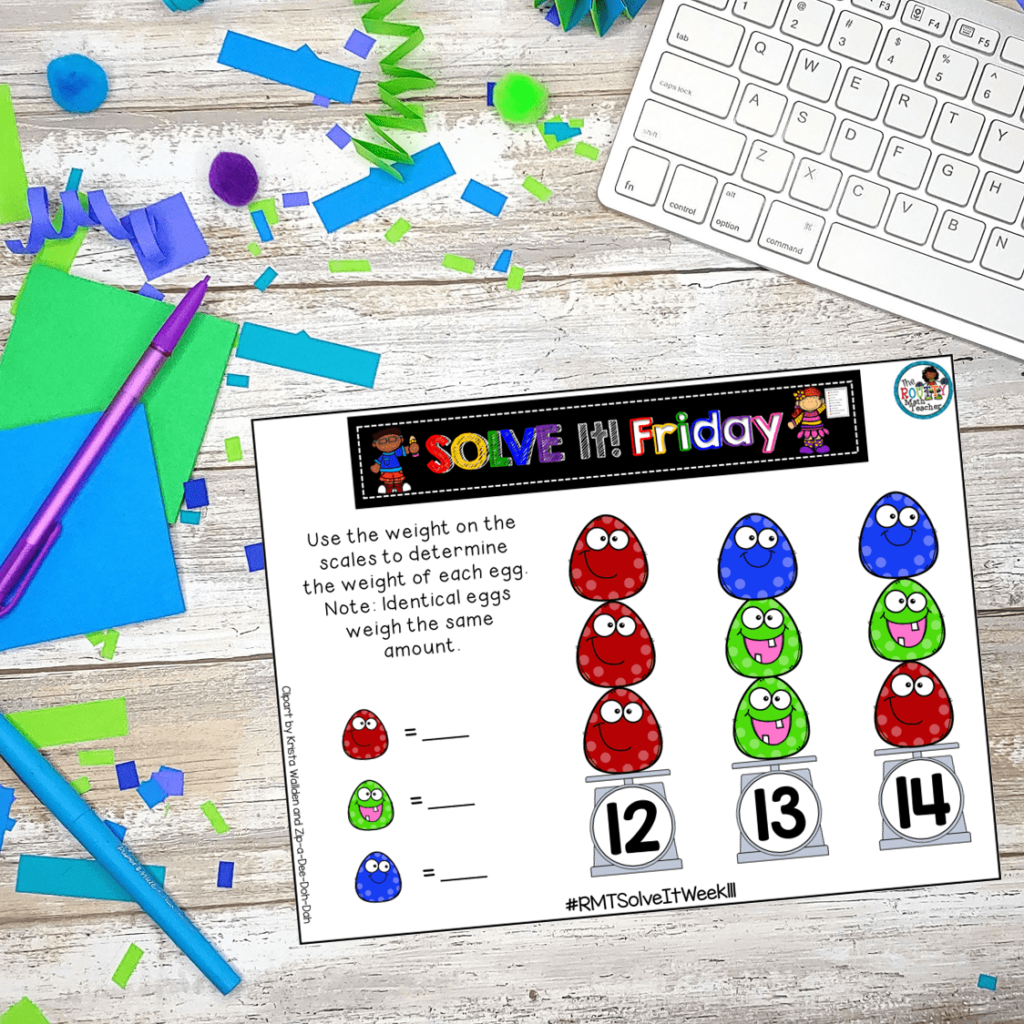
7. Which One Doesn’t Belong?
“Which One Doesn’t Belong?” is a website that includes pictures of a collection of items. The basic idea of the website is simple but so brilliant. A picture with multiple components is presented. Students then discuss which picture or element of the picture does not belong. Here’s the beauty of it: There is no right or wrong answer. As long as students can justify their response, their answer is correct. This makes the Which One Doesn’t Belong? task a great critical thinking challenge. Check it out here.
8. Three-Act Math Tasks
This task is pretty new to the math world, but the idea behind it is incredible. I often hear teachers say that they have trouble finding good content-based problem solving tasks, I know I used to feel that way, but this site does exactly that. These math tasks were created with math modeling in mind– students are presented with a real-world math problem and are given clues and hints as they attempt to solve the problem. There are several places to find these awesome math tasks. One site is created by Dan Meyer– Three-Act Math Tasks. Another site is created by Graham Fletcher– 3-Acts Lessons.
9. Games
Infusing problem solving through games is another strategy for ramping up the rigor in the classroom. Some example of games that do just that are “target the number” games, like Make 24, and fact practice games like Salute. Use the links to read more about these critical thinking games.
10. Number Logic
These tasks make great starters. Like the logic puzzles, weight logic tasks, and tiling tasks described above, students have to use the clues to determine the value of each symbol. These tasks are quick and can be completed in just a few minutes. See the image below for an example.
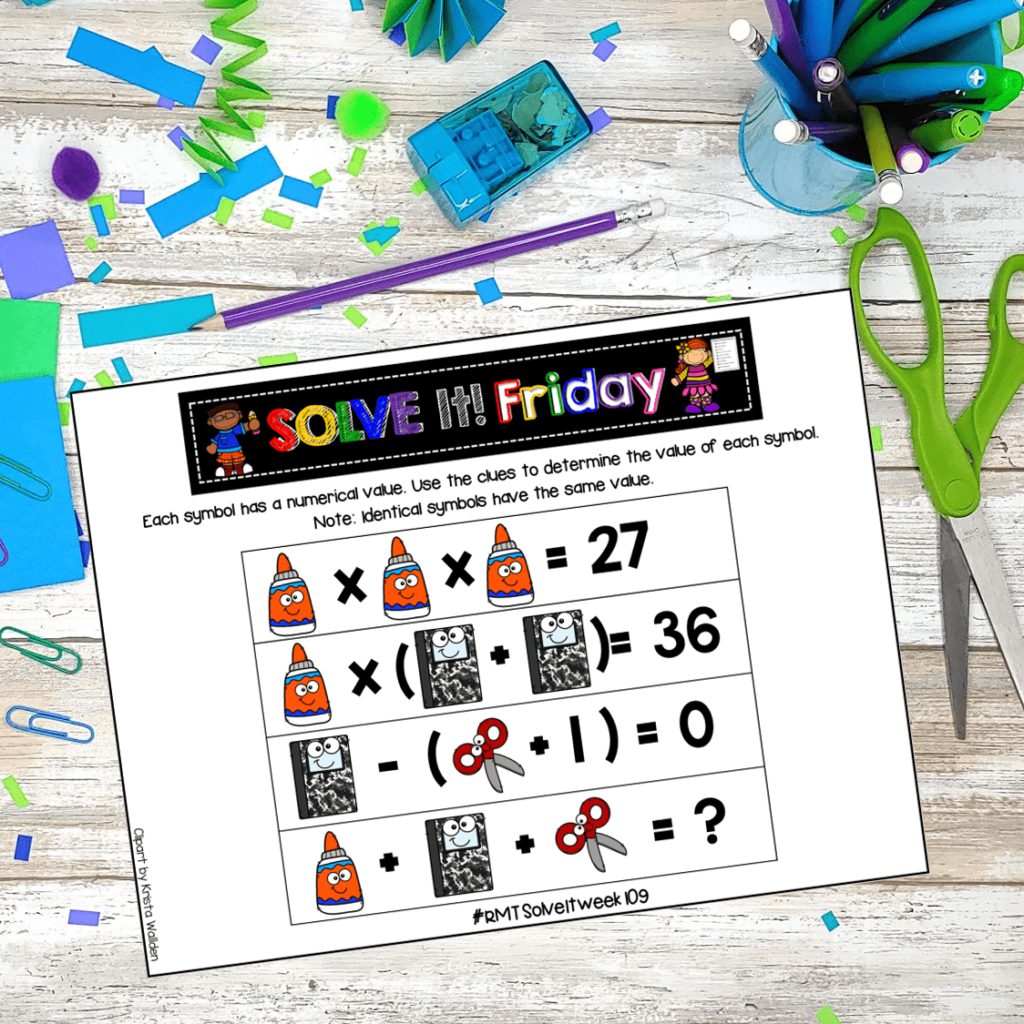
Ready to Start Solving?
Integrating problem solving throughout your daily math program, such as through math stations, math menus, enrichment time, games, starters, etc., into your daily routine is a great way to get your students thinking, emphasize critical thinking, and reinforce grade-level content and skills.
Sound Off! What’s your favorite task? Respond in the comments below.
Credits:
- Quote Courtesy of The National Council of Teachers of Mathematics Principles to Actions: Ensuring Mathematical Success for All (2014)
- Photo Mock-ups Courtesy of Coffee Beans and Children’s Dreams






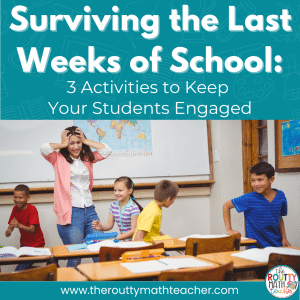
2 Responses
These ideas look fantastic!
These are wonderful!! I found on your site about labels for Jars for math centres. These have both single person activities and groups activity on the labels. Now I cannot find them any where. Could you show me where they so I can purchase?/
Thank you!